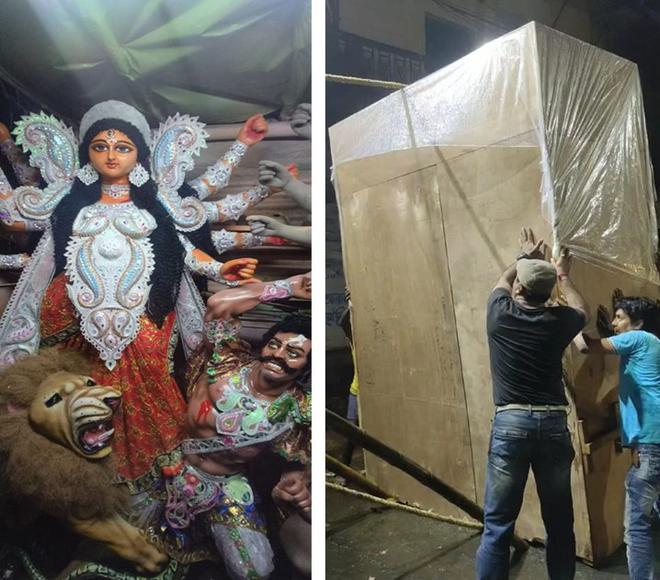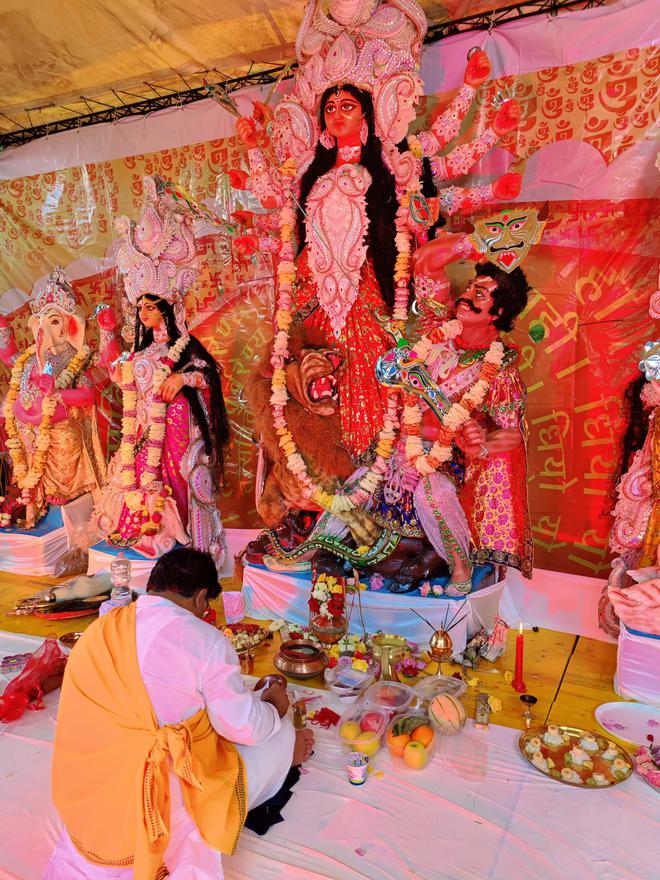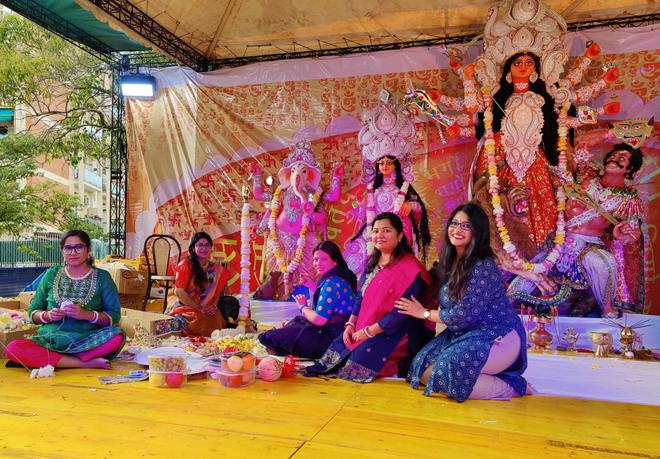Over the years artists, sculptors, and organisers of Durga Puja celebrations have taken the traditional metiers of a conventional celebration and poured into them a new aesthetic that is dynamic and malleable to the changing climes.
This year, after a 14-year hiatus, the Indian Cultural Organisation in Rome in collaboration with the Embassy of India in Rome, decided to revive the tradition of celebrating Durga Puja there .

A 12-feet-tall Durga idol sculpted by Basudev Paul from Kumartuli (a potters’ quarter in northern Kolkata where Durga idols are sculpted), was dispatched from Kolkata two months prior to the festivities. The goddess sailed in a ship for 40 days, packed tightly in a wooden container along with her children, Saraswati, Kartik, Ganesh, and Lakshmi.

Rajesh Sahani, president of the Indian Cultural Organisation (ICO) in Rome says, “In conjunction with the puja celebrations, this year we have curated a five-day Navaratri festival. Each evening will have cultural events and during this time, an array of vegetarian dishes representing different regions of India will be available. Additionally, beloved Indian-Bengali delicacies like khichuri-labra and payesh will be served as prasad to all attendees. It is worth noting that our puja transcends the Indian expatriate community, with many Italians and Europeans eager to participate in the festivities.”

“What is remarkable is how eager and accepting Italians are of our culture. Many locals partake in the activities which are not just limited to rituals and food, but also Bharatanatyam, Kathak and yoga workshops (at the open level),” says Manjistha Roy one of the organisers of the event.
In a first, a series of lectures by scholars of Hindu Philosophy from the University of Sapienza, Roma will be a part of this cultural event.
Utsa Bhaduri, cultural secretary of the Indian Cultural Organisation (ICO) says, “This year, we aspire to showcase the cultural significance of Durga Puja as a UNESCO Intangible Cultural Heritage of Humanity to the international community in Rome. Our intention, is not only to embrace the culture of a foreign nation, but also showcase our own culture with finesse on foreign soil. Establishing a cultural bridge between India and Italy is a crucial objective of our celebration.”
A highlight of the celebrations is the phuchkaor Kolkata’s answer to the panipuri which is not just a roadside snack unique to the city – but a nugget of emotion and history that illumines the appeal of a puja held more than 7,000 kilometres away from the seat of flurry and fervour.







